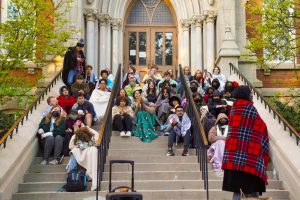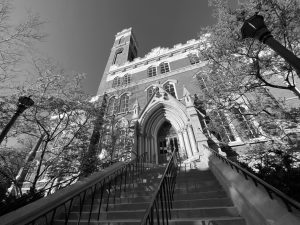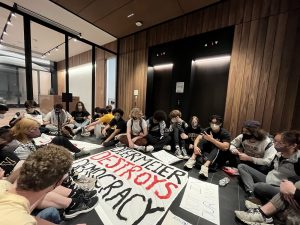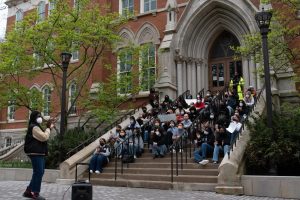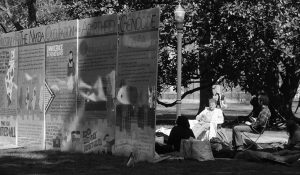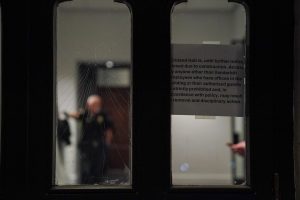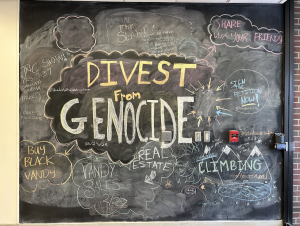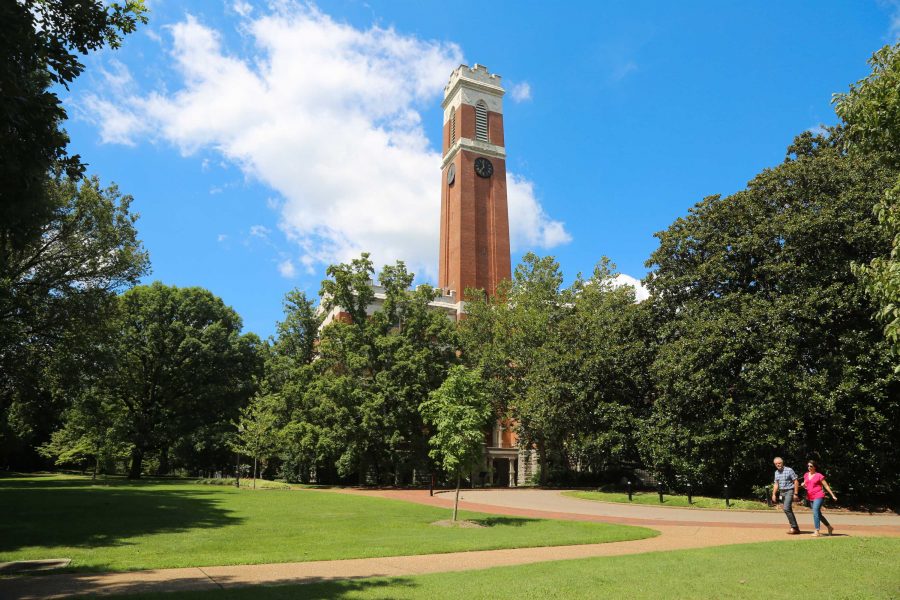Earlier this year, the university created the Advisory Accessibility Task Force, a group of faculty, staff and students charged with aiding in the development of inclusion and accessibility strategies for future land use planning initiatives.
Project manager Mark Petty, the vice chancellor for plant operations, said the task force was created to help the university to ensure that all of its facilities are as inclusive as possible. The members plan to give the university administration a five-year-plan that contains a series of accessibility improvements, which Petty said should materialize in the late winter or early spring of 2018.
“The priorities follow a sustainability model with a triple bottom line of societal needs, environmental and sustainability needs and economic needs,” Petty said.
The initial phase of the task force involved an assessment of the current state of campus accessibility. During the summer, teams of students collected recorded eight to ten-thousand issues regarding the accessibility of facilities. Petty said the issues the students noticed were very far-ranging.
“They range from coat hangers that are too high for somebody in a wheelchair to reach to elevators that need to be completely renovated,” Petty said.
Other possibilities Petty identified included converting all knob door handles to lever handles, changing the signage of single-occupancy bathrooms so that they become all-gender restrooms and making bathrooms touchless and paperless. Petty suggested that some of these changes could be made as a part of the campus’s existing replacement process for broken objects in the facilities.
“The task force will work alongside the Office of Inclusive Excellence, the Office for Equity, Diversity and Inclusion and other campus partners to develop strategies that best communicate the data collected in this project with the entire Vanderbilt community,” Petty said, “Our desire is to develop a plan that is both effective and transparent.”
In terms of effectiveness, Vanderbilt University’s campus and facilities meet the standards set by the American for Disabilities Act. However, students with disabilities can still petition for changes to facilities if they believe the campus could become more accessible. Petty welcomes the participation of students with disabilities.
“We want folks to be as accessible as possible, but when am I, an able-bodied person, able to say to you whether this is accessible?” Petty said. “We need your input on these things. The people with disabilities in our community help us out.”
Pisanach Chinratanalab is one such student who was involved in making the campus more accessible. A sophomore with cerebral palsy, she sent petitions to the Equal Opportunity, Affirmative Action, and Disability Services office for many accessible buttons around campus last year. These buttons are the green ones seen near entrance doors and bathrooms.
Chinratanalab said that the accessible button near the bathroom of the Commons Center and the one near the bathroom on the first floor of the Hobbs Center are new. However, she still has some concerns about the accessibility of other buildings on campus.
“Peabody Library is not accessible at all,” Chinratanalab said. “People in wheelchairs usually have to call the assistant for the elevator in Peabody Library to get from one floor to another.”
The campus comprises three hundred and thirty three acres with six million square feet of academic, residential and administrative space. Many structures on campus are also old. According to Petty, the university administration must consider the size of the campus, the age of the buildings and spending on new academic facilities when they develop priorities for accessibility improvements. As a result, achieving complete accessibility across campus will likely be a slow and gradual process.
“I think accessibility is an important issue,” Petty said. “Our society says, ‘Let’s bring people in.’ It used to be like, ‘I gave you a back door to come in.’ We don’t want folks to go through the back door. We don’t do it with race. We don’t do it with gender. Why is accessibility for those with disabilities any different? It just isn’t.”


